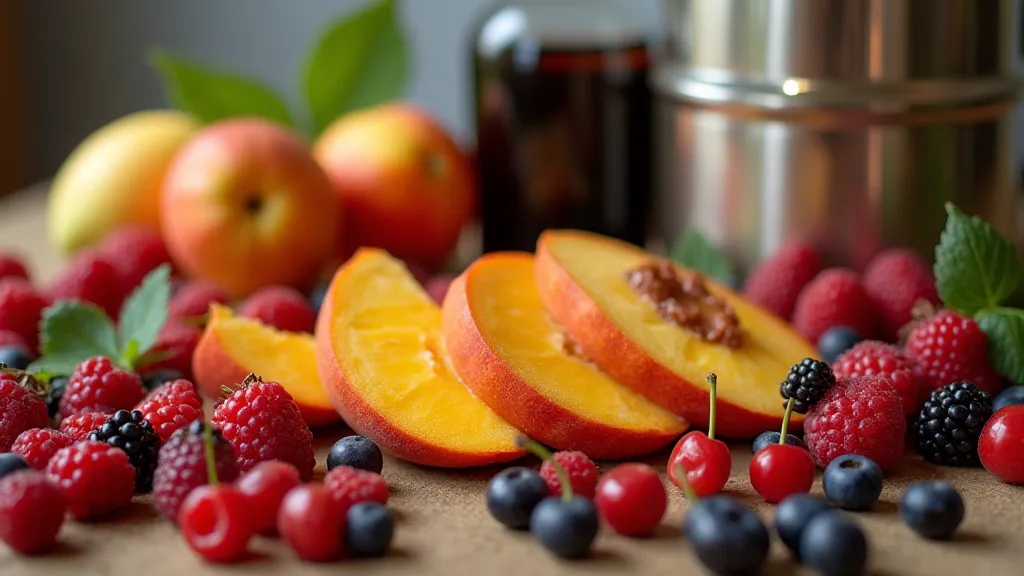Homebrewing with Fruit: Adding Flavor and Complexity
Beyond the classic malts and hops, lies a world of delicious possibilities when it comes to homebrewing. One of the most exciting ways to customize your beer is by incorporating fruit. Adding fruit to your beer can significantly enhance its flavor profile, creating everything from subtly refreshing ales to intensely fruity stouts. This guide will walk you through the essentials of brewing with fruit, covering fruit selection, timing, and potential pitfalls.
Why Brew with Fruit?
Fruit adds a layer of complexity that's hard to achieve through other means. They contribute:
Unique Flavors: From the tartness of berries to the sweetness of mangoes, fruit offers a vast spectrum of flavors.
Aromatic Compounds: Fruit releases volatile compounds that add intriguing aromas to your beer.
Color: Many fruits can impart beautiful hues, enhancing the visual appeal of your brew.
Understanding how those colors are perceived and measured can be surprisingly technical. Brewers often use SRM (Standard Reference Method) to quantify color. If you’re new to this aspect of brewing, exploring understanding IBU and SRM can provide a solid foundation.

Choosing the Right Fruit
Not all fruits are created equal when it comes to brewing. Here's a breakdown of popular choices:
Berries (Raspberries, Strawberries, Blueberries): Offer a bright, tart flavor and beautiful color. Best added late in the fermentation process.
Stone Fruits (Peaches, Apricots, Cherries): Contribute sweetness and a rich, juicy character. Can be added during fermentation or after.
Tropical Fruits (Mangoes, Pineapple, Guava): Bring intense tropical flavors and aromas. Best added after fermentation.
Citrus Fruits (Oranges, Lemons, Grapefruit): Provide a zesty, refreshing character. Careful with the pith as it can add bitterness.
Consider the fruit's sugar content and acidity when planning your recipe. Too much sugar can raise the alcohol content considerably, while excessive acidity can create an overly sour beer. Balancing these elements is crucial to crafting a beer that’s both flavorful and drinkable. It's a balancing act somewhat akin to the precision required when creating a classic pale ale – you might find brewing a classic pale ale offers some insight into building complex recipes.
Timing is Everything
When you add fruit significantly impacts the final product.
Primary Fermentation (During active yeast fermentation): The yeast will consume a significant portion of the fruit's sugars, reducing alcohol content. This can also impart fruity esters from the yeast itself, which can sometimes clash with the fruit flavor. Generally not recommended unless you are very experienced.
Secondary Fermentation (After primary fermentation): A common and relatively safe method. Allows for more distinct fruit flavor without the yeast consuming too much sugar.
Crash Cooling/Kegging/Bottling (After fermentation is complete): This is often the best approach for vibrant fruit flavors and aromas. The fruit is added directly to the beer, and carbonation can occur simultaneously.
Preparation and Sanitation
Proper sanitation is crucial when brewing with fruit. Fruit can carry wild yeasts and bacteria that can spoil your beer. The importance of water chemistry also ties into sanitation, as improperly treated water can harbor unwanted organisms. For a deeper understanding, consider reviewing understanding the importance of water chemistry in brewing.
Wash the Fruit: Thoroughly wash the fruit under warm water, even if it's organic.
Consider Pasteurization (Optional): Briefly heating the fruit can kill unwanted microbes. However, this can also degrade some of the fruit's flavor compounds.
Freezing (Optional): Freezing and thawing fruit can break down cell walls, releasing more flavor and aroma.
Potential Problems and How to Avoid Them
Brewing with fruit isn't always a walk in the park. Here are a few common pitfalls:
Oxidation: Fruit additions can increase the beer's exposure to oxygen, leading to off-flavors. Minimize exposure during and after fruit addition.
Infection: Even with sanitation efforts, infection is a risk. Pay close attention to sanitation and consider using potassium sorbate to inhibit yeast growth after fruit addition (especially with late additions).
Pectic Depolymerase (PD): Fruit contains pectin, which can cause haze. Adding pectinase (Pectic Enzyme) can break down the pectin and reduce haze. The effects of hop additions on aroma can be similar. Exploring the art of dry hopping might offer insights into minimizing unwanted effects.
Beyond haze, the aromatic compounds released by fruits can sometimes interact unexpectedly with the beer. Careful consideration of hop varieties, timing, and quantities is essential to achieve the desired result. Understanding how to control these effects requires experimentation and attention to detail.
Furthermore, the type of fruit used can significantly impact the final product. Berries, for example, tend to impart a tart and fruity flavor, while tropical fruits like mangoes and pineapple contribute intense sweetness and aroma. Careful selection of fruit varieties is crucial for achieving the desired flavor profile.
The addition of fruit can also alter the mouthfeel of the beer. Some fruits, like peaches and apricots, contribute a subtle creaminess, while others, like citrus fruits, add a refreshing acidity. Brewers often adjust the recipe to compensate for these changes, ensuring a balanced and enjoyable beer.
To mitigate potential problems, it’s always a good idea to start with a small batch and experiment with different fruits and timings. Taking detailed notes on each batch is crucial for replicating successful results and avoiding costly mistakes. Brewing is a craft that requires patience, observation, and a willingness to learn from both successes and failures.
Consider the impact of fruit on the beer's carbonation. Fruits contain sugars that can be fermented, potentially increasing the carbonation level. Brewers often adjust the amount of sugar added to the recipe to achieve the desired level of carbonation.

Conclusion
Adding fruit to your homebrew opens up a world of exciting possibilities. With careful planning, meticulous sanitation, and a bit of experimentation, you can create truly unique and delicious beers. Don’t be afraid to get creative and explore the endless flavor combinations that fruit has to offer!







